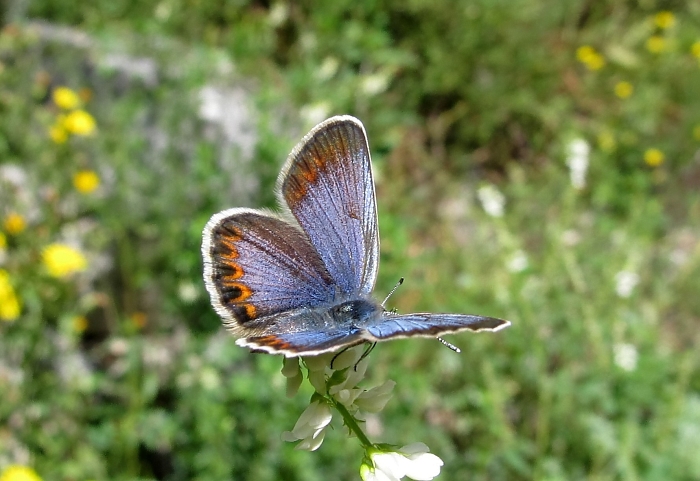
Male, Switzerland, July 2014
Plebejus idas
Refresh page if pictures don't load fully:

Male, Switzerland, July 2014

Male, Switzerland, June 2014

Male, Switzerland, July 2016


Female, Switzerland, August
2013

Female, Switzerland, September 2010

Female, Switzerland, May 2009


Males at mud, Switzerland,
August 2016

Switzerland, May 2007

Switzerland, May 2007

Mating pair, Switzerland, May 2007
Here is a very low quality video of idas blues interacting with ants, filmed in Switzerland in June 2007:

Female, Switzerland, 2004 (this individual is exceptionally blue, I think)

Norway

Distribution
This is a widespread
butterfly of lowland
and mountain, found from the south of Europe right up to the far north.
Like many of its close relatives, it is quite sedentary and shows a
great variety of regional forms and subspecies. In Switzerland, where I
have studied it the most, there is a distinct difference between the
lowland subspecies, calliopsis,
found in the Rhône Valley, and the mountain forms. This is obvious not
so much in the appearance of the butterflies, though the upland ones
are typically smaller, but in the habitat. Calliopsis
uses sea buckthorn as a foodplant and occurs in hot, dry locations
where this plant grows. The upland butterflies use lower-growing herbs
in the pea family, as well as heathers, and are commonly found along
the flowery edges of grassy, mountain tracks.
In southern Europe, idas blues are double brooded, flying in
May/June and then again in July/August. Further north, and at altitude,
they are single brooded. The books say they fly in July/August but I
see them into September in the Rhône Valley of Switzerland.